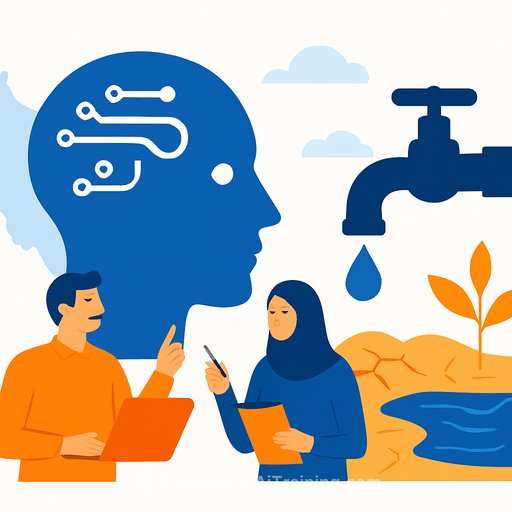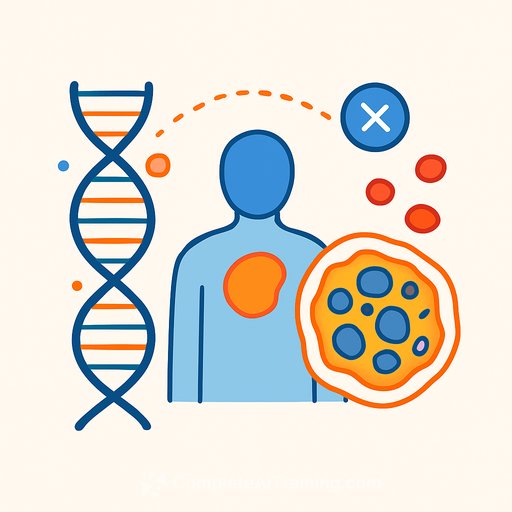Can AI Solve Iran's Dire Water Crisis? Global Collaboration Points to Practical Answers
Iran is running out of water. A cross-border research team led by University of St. Thomas professor John P. Abraham and Iranian colleagues has spent six years on 50 studies to find solutions that work in the field, not just on paper.
With a 20-person team on the ground in Iran, the group is testing and improving the structures that move, store, and safeguard water. Their findings, published in the Iranian Journal of Science and Technology and by IWA Publishing, show how AI can improve design quality, reduce risk, and extend the lifespan of critical infrastructure.
The crisis by the numbers
Iran receives about 260 millimeters of rain per year; the global average is roughly 800 millimeters. Around 90% of Iran's water use goes to agriculture, making irrigation efficiency and distribution systems the highest-leverage targets.
The team's scope is clear: deliver water to farms and cities with higher efficiency, and ensure the structures that do it are safe and built to last.
Field-first research, backed by AI
The collaboration centers on real assets and real data. Iranian researchers are operating at dams, spillways, and transfer tunnels-such as those feeding Lake Urmia restoration efforts-to run experiments and validate models.
Abraham and colleagues train AI models to analyze thousands of design options, test performance, and recommend improvements. The result: faster iteration, stronger designs, and lower long-term costs.
Case focus: spillway optimization
Abraham co-authored studies with Dr. Farzin Salmasi of the University of Tabriz to optimize storage dam spillways, including stepped spillways. The goal was to maximize energy dissipation during floods-reducing destructive forces on the structure and improving safety.
According to Salmasi, this approach supports more economical designs without compromising performance. AI helps teams move beyond a "good" design to a design that balances cost, durability, and risk under real conditions.
Why this matters for lakes and farms
Lake Urmia's surface area has contracted dramatically in recent decades. Redirecting water more efficiently and protecting the systems that move it are central to any recovery plan. Satellite records highlight the scale of the decline and the urgency for action.
On the agricultural side, upgrading irrigation (for example, drip systems) can cut waste while maintaining yields. AI-guided design can prioritize where to invest first for the greatest impact.
What scientists and engineers can apply now
- Pair AI models with field experiments. Let operational data shape and validate the design space.
- Optimize for multiple objectives at once: safety margins, energy dissipation, cost, and maintainability.
- Stress-test designs across extreme events to reduce the risk of catastrophic failure.
- Integrate remote sensing (e.g., satellite observations) with hydraulics and hydrology models to connect structure-level performance to basin-scale outcomes.
- Prioritize upgrades that deliver water-use efficiency in agriculture; the gains compound across the system.
Education with real-world impact
Abraham brings this work into the classroom, training undergraduates with AI and virtual reality to improve fluid flow. Students apply the same principles to design piping systems, medical devices (e.g., catheters), and to analyze drag in water.
The goal is straightforward: produce engineers who can move from simulation to field application and deliver measurable results from day one.
Outlook
Climate change is reshaping precipitation patterns, raising the stakes for water management. The team's view is practical: use AI to accelerate optimization so that infrastructure keeps pace with changing conditions.
Their findings are already informing the next generation of water structures-stronger, more efficient, and built for longevity.
About the researchers
John P. Abraham is a professor of thermal sciences in the School of Engineering at the University of St. Thomas (Minnesota). His work spans mechanical engineering, thermal sciences, biomedical engineering, renewable energy, climate science, and engineered devices.
Farzin Salmasi is a professor in the Department of Water Engineering at the University of Tabriz (Iran). Born in Tehran in 1970, he specializes in hydraulic structures, including modeling of spillways, dams, and irrigation systems. He has authored more than 150 journal articles, presented internationally, and reviews for leading journals in engineering and hydrology.
Further reading
Skill-building for AI in engineering
If you want to deepen your AI skills for applied research and engineering, explore practical course paths by job role here: Complete AI Training - Courses by Job.
Your membership also unlocks:






